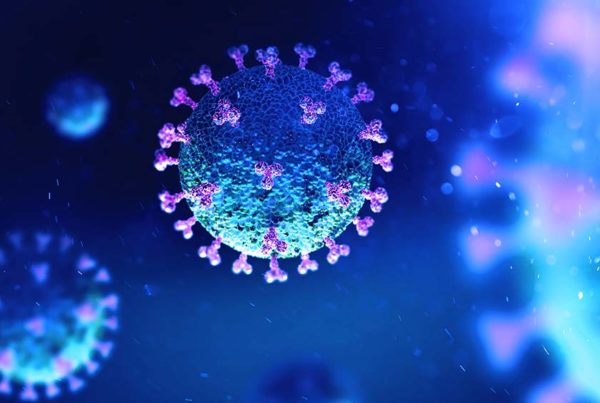
Some of the most important questions have been answered. We can thwart infectious pandemics by improving health and fitness.
COVID-19 was listed as the third leading cause of death in the U.S. in 2020, according to two newly published studies,. Yet, an important overlooked fact, as reported by the U.S. Centers for Disease Control and Prevention, was that only about 5 percent of these deaths actually were due to the virus alone.
Ninety-five percent occurred in individuals who also had at least one chronic illness such as pneumonia, respiratory failure, hypertension, diabetes, or other significant contributing condition. These are often referred to as pre-existing conditions or co-morbidities.
Today, because of what we learned and relearned, we are much better equipped to avoid the next outbreak, but only if we address the key causes. The leading contributing factor to these co-morbidities is the overfat pandemic, fueled by poor diet and inactivity.
New studies continue to show how increased body fat promotes the risk of infection from COVID-19, including its severity, hospitalization, and death, and vaccine effectiveness may be significantly reduced. And, these individuals may infect others more easily with increased viral replication and prolonged virus shedding. By the way, being overfat also increases the risk for the seasonal flu.
As discussed in previous articles, the overfat pandemic has been far worse and more deadly than COVID-19. The pandemic just put an exclamation point on this global crisis. The country with the highest prevalence of overfat is the U.S., and also has the highest rates of infection (India, Brazil and other hot spots also rank high in both). Now, even more people are more overfat due to the social stress, including disinformation associated with COVID-19, resulting in eating more junk food and reduced physical activity.
This isn’t some sensational hysterical headline — it’s reality. One single risk factor — overfat — is not only easy to detect and change, but doing so is essentially free.
As we learn more about COVID-19, the continuing question is why we are still not focused on preventing next pandemic and getting to the root of the real problem — unhealthy people. When reasonably healthy humans are exposed to a new virus, the body develops natural immunity against it.
While new deadly viruses have emerged from China, Mexico, the Middle East, Europe, America, and elsewhere over the years, scientists keep chasing them. Researchers are trying to find the next big bug passing between animals (wild and domestic) and humans, something which has been occurring for millions of years. However, for many years they also keep missing the underlying causes, spending hundreds of millions of dollars in the U.S. alone.
Is the solution so obvious people don’t take it seriously? Of course, encouraging people to get healthier could be done on a very small budget. Even paying people to get healthy would be much cheaper than what we are currently doing.
COVID’s little helpers
Having previously discussed these contributing conditions as a significant reason for the COVID-19 pandemic, it was good to see this data from the CDC. These pre-existing conditions are typically the result of chronic inflammation and insulin resistance (carbohydrate intolerance) due to excess body fat developed from consuming sugar and processed carbohydrates. This, subsequently, increases the risk of chronic disease, which trickles down to poor immunity and increased risk of infection.
While COVID-19 deaths were a little higher than other major respiratory infections, the largest contributor to the U.S. death rate was preventable chronic illness, primarily cardiovascular disease:
Cardiovascular disease 850,000
Cancer 599,000
COVID-19 345,000
Other respiratory infections 211,000
Infectious disease might be best listed all together. While COVID-19 is on our minds right now, similar numbers of deaths occurred from all other infections. In total, this number is close to the No. 2 cause of death, cancer. However, the most common problem, and a better perspective, is to view chronic disease versus infectious disease. The former raises the risk of and promotes infections:
Chronic disease 1,735,000
Infectious disease 556,000
While this data is good, valuable, and useful for future planning, when presented to most people in the world, it’s headline-grabbing and little more than entertainment. Instead, media, governments and even scientists should do what clinicians do — help people prevent illness with a clear message on how to live healthier lives.
We can put this issue into perspective by listing the prevalence of a primary cause of all these conditions is globally:
Overfat 6,240,000,000
Chronic disease 1,735,000
Infectious disease 556,000
While chronic disease contributes to COVID-19 deaths, the primary risk factor for both — the elephant in the room — is excess body fat. (Interestingly, vitamin D, a key factor for healthy immunity, tends to be low when overfat.)
The price of a pandemic
Unfortunately, despite the trillions of dollar spent on COVID-19 and its fallout, investing in true prevention is only accomplished (reactive vs. proactive), by smaller numbers of individuals on their own. As an example, while the U.S. and the U.K. are considered by scientists and politicians to be the most prepared countries for pandemics, they also have the worst COVID-19 records.
A recent New England Journal of Medicine article by Dr. Christopher Elias estimated that billions of dollars of investment would save trillions of dollars in COVID-19 fallout. That’s about $5 per person per year to be prepared.
Breaking the vicious cycle of panic and health neglect is something vital in moving forward, with education playing a key role.
The elephant in the room
Responding to infectious pandemics is an important public health challenge, but it should not be at the expense of ignoring the overfat pandemic — it’s not just an elephant in the room, it’s a really big, smelly one. Social distancing ourselves from sugar and junk food and can help significantly. Simple enough, just eat real food — natural fats, proteins and carbs — and avoid junk. Likewise, physical activity can also help significantly. And I don’t mean training for a marathon, but simply an easy 30-minute walk a few days a week can be very effective!
The studies also showed — and the untold reasons are italicized:
That COVID-19 deaths were highest among individuals ages 85 and older — not due to age itself, but because they had more co-morbidities.
Deaths were higher among males than females — that’s because more men are overfat compared to women.
And deaths were higher in Native Americans, Hispanics and Blacks — these populations generally have higher body fat content.
Somewhere along the way we must take charge of our own immunity! Not only can this reduce the risk of viral infections, but a healthy immune system can quickly enable us to safely withstand new viral threats, while also helping prevent chronic disease.
The final word on COVID-19 is the same as the first one — the risk of infectious pandemics is much lower when we’re healthy.
Helpful links
In case you missed the previous articles:
Special Report: COVID Recovery
References
Ahmad FB, et al. Provisional Mortality Data — United States, 2020. MMWR. 2021;70. https://www.cdc.gov/mmwr/volumes/70/wr/mm7014e1.htm?s_cid=mm7014e1_w#T1_down
Elias C, et al. Emerging Infectious Diseases — Learning from the Past and Looking to the Future. N Engl J Med. 2021; 384. DOI: 10.1056/NEJMp2034517.
Gray GC, et al. Mitigating Future Respiratory Virus Pandemics: New Threats and Approaches to Consider
Viruses 2021; 13(4). https://doi.org/10.3390/v13040637.
Gundlapalli AV, et al. Death Certificate–Based ICD-10 Diagnosis Codes for COVID-19 Mortality Surveillance — United States, January–December 2020. MMWR. 2021;70. https://www.cdc.gov/mmwr/volumes/70/wr/mm7014e2.htm?s_cid=mm7014e2_w
Maffetone P, Laursen P. The Prevalence of Overfat Adults and Children in the US. Front Public Health. 2017;5:290. doi: 10.3389/fpubh.2017.00290.
Maffetone P, Laursen P. Revisiting the Global Overfat Pandemic. Front Public Health. 2020;8:51.
doi: 10.3389/fpubh.2020.00051.
Dalamaga M, et al. Understanding the Co-Epidemic of Obesity and COVID-19: Current Evidence, Comparison with Previous Epidemics, Mechanisms, and Preventive and Therapeutic Perspectives. Curr Obes Rep. 2021. doi: 10.1007/s13679-021-00436-y.








